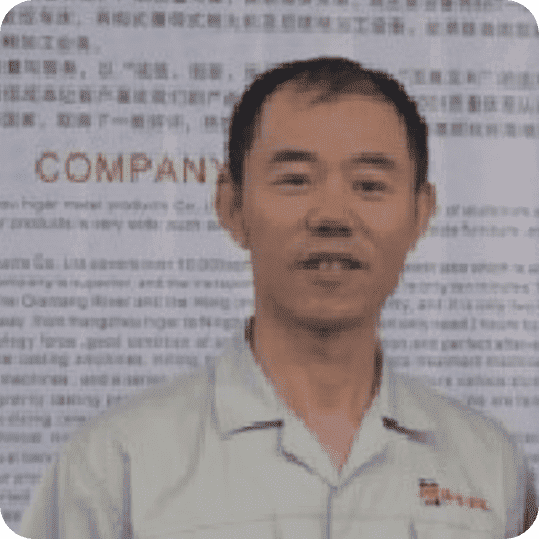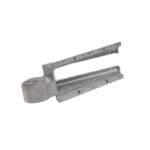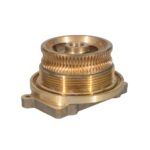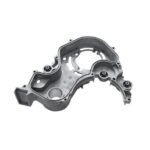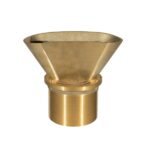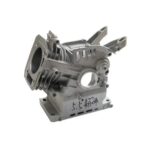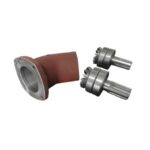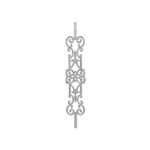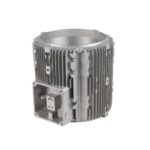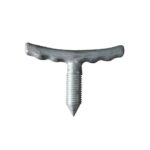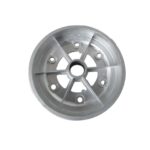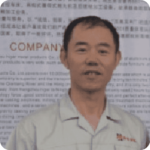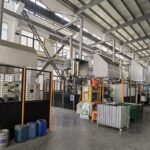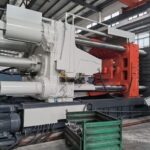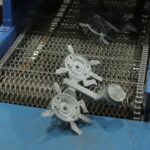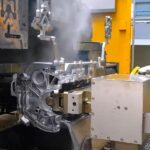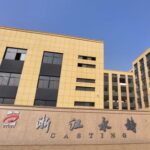What is IP Rating
The Ingress Protection (IP) rating, defined by IEC 60529, is the global standard that classifies the degree of protection offered by electrical enclosures. It matters in every industry—from solar energy systems and telecom base stations to LED lighting, food processing plants, and marine control units.
In this guide, I’ll break down the meaning of IP codes, show you how different levels are applied in real-world industries, and explain why aluminum die-cast enclosures are the preferred choice for achieving IP65, IP66, IP67, and beyond.
How to Read IP Ratings
An IP code typically has two digits:
- First digit (0–6): solid particle protection (dust, tools, fingers).
- Second digit (0–9K): liquid ingress protection (drips, sprays, immersion).
- Optional letters (C, D, F, H, M, S, W) indicate special conditions like oil resistance, high voltage, or weather protection.
For example, IP67 means the enclosure is completely dust-tight (6) and can withstand temporary immersion in water up to 1 meter (7).
IP Solid Particle Protection (First Digit: 0–6)
| Digit | Definition | Typical Industry Applications |
|---|---|---|
| 0 | No protection | Indoor consumer electronics with secondary housing |
| 1 | >50 mm objects (hand contact) | Large switchgear in dry rooms |
| 2 | >12.5 mm (fingers) | Basic indoor lighting enclosures, office sockets |
| 3 | >2.5 mm (tools, thick wires) | Control panels in workshops, indoor electrical boxes |
| 4 | >1 mm (small wires) | Factory automation cabinets, lab instruments |
| 5 | Dust-protected (limited ingress) | Cement plant control boxes, woodworking machines, mining conveyors |
| 6 | Dust-tight (no ingress) | Desert solar inverters, telecom outdoor cabinets, underground mining systems |
IP Liquid Ingress Protection (Second Digit: 0–9K)
| Digit | Definition | Typical Industry Applications |
|---|---|---|
| 0 | No protection | Indoor IT servers (with climate control) |
| 1 | Dripping water (vertical) | Office appliances, indoor switch boxes |
| 2 | Dripping water at 15° | Kitchen devices, indoor lighting fixtures |
| 3 | Spraying water (±60°) | Outdoor digital billboards, bus stop displays |
| 4 | Splashing water | Parking gate controllers, street light enclosures |
| 5 | Water jets (12.5 L/min @3m) | Garden pump housings, outdoor LED lamps |
| 6 | Powerful water jets (100 L/min @3m) | Food processing plant control boxes, marine deck equipment |
| 7 | Temporary immersion (≤1m, 30 min) | Underground junction boxes, flood-prone traffic cabinets |
| 8 | Continuous immersion (depth defined by manufacturer) | Submersible pumps, dockside CCTV power enclosures |
| 9K | High-pressure, high-temp jets (80°C) | Automotive engine control, food & beverage washdown cabinets |
IP Supplementary Letters and Their Meanings
| Letter | Meaning | Application Scenarios |
|---|---|---|
| C | Tools | Industrial enclosures in workshops where tools are used frequently |
| D | Wires <1 mm | Fine electronics enclosures, medical sensors |
| F | Oil resistant | CNC machining centers, hydraulic system enclosures |
| H | High-voltage device | Transformer housings, power distribution units |
| M | Tested while moving | Motor control units, pumps |
| S | Tested while stationary | Sensors or meters during downtime |
| W | Weather conditions | Highway signal cabinets, offshore wind turbine control boxes |
Common IP Rating Misunderstandings and Buyer Mistakes
- Water-resistant ≠ Waterproof → IP65 resists rain, but only IP67/68 can handle immersion.
- Higher number is not always better → IP69K suits food factories but not telecom cabinets.
- IP ≠ Mechanical strength → Even IP67 housings can fail under impact if the material is weak.
- IP does not cover corrosion → Salt spray and chemical resistance are separate tests.
- IP does not cover EMI shielding → Telecom and automation require die-cast aluminum for this.
- IP tests are static → Real conditions like vibration and thermal cycling can degrade seals.
- IP ≠ NEMA → Many buyers assume equivalence, but NEMA includes icing, gasket aging, and mechanical durability.
IP Ratings vs NEMA Enclosure Standards
| NEMA | Approx. IP | IP Code Meaning | NEMA Extra Requirements | Applications |
|---|---|---|---|---|
| 1 | IP20 | Solid 2: >12.5 mm protection | Indoor, basic protection from contact | Indoor distribution panels |
| 2 | IP22 | Solid 2 + dripping at 15° | Condensation drainage | Basements, equipment rooms |
| 3 | IP54–55 | Solid 5 + splashing/spray | Rain, windblown dust, ice | Outdoor enclosures, rooftop units |
| 3R | ~IP24 | Solid 2 + splashing | Rainproof only | Outdoor meter boxes |
| 4 | IP66 | Solid 6 + powerful jets | Hose-down cleaning | Food/beverage plants |
| 4X | IP66 + corrosion | Same as 4, plus salt spray | Coastal/marine environments | |
| 6 | IP67 | Solid 6 + immersion | Short-term immersion | Underground junction boxes |
| 6P | IP68 | Solid 6 + continuous immersion | Long-term immersion, corrosion | Dockside, marine |
| 12 | IP52–54 | Solid 5 + dripping/splash | Oil/coolant seepage | Machine shop cabinets |
Applications in Electrical Enclosures & Aluminum Die-Cast Products
| Industry | Typical Products | IP Level | Why Aluminum Die-Cast |
|---|---|---|---|
| Solar Energy | PV combiner boxes, inverters | IP65–67 | UV & heat resistance, precision sealing |
| Telecom / 5G | Outdoor base station cabinets | IP66–67 | EMI shielding (60–70 dB), anti-corrosion |
| Traffic & Smart City | Signal control boxes, CCTV housings | IP65–67 | Impact resistant (IK08–IK10), aesthetic finish |
| Marine & Offshore | Ship power boxes, port monitoring units | IP66–68 | Salt spray >1000 h, watertight seals |
| Industrial Automation | Control panels, sensor housings | IP54–66 | Dust/oil resistant, rigid housing |
| Lighting | LED street lamps, tunnel lights | IP65–66 | Heat dissipation, waterproof housings |
| Food & Beverage | Processing plant enclosures | IP66–69K | Withstand hot washdown cleaning |
| Mining & Heavy Industry | Motor starters, ventilation control | IP65–67 | Dust-tight, high mechanical strength |
Buyer’s Guide: Choosing the Right IP Rating
Table: Quick Selection
| Scenario | Recommended IP | Why |
|---|---|---|
| Indoor offices & data centers | IP20–22 | Basic protection, low dust, no water |
| Bathrooms & kitchens | IP44–65 | Protection against splashes and humidity |
| Outdoor lighting & junction boxes | IP54–65 | Withstand rain and dust |
| Industrial automation (factories) | IP54–66 | Oil mist, dust, occasional washdown |
| Solar & telecom cabinets | IP65–67 | Dust-tight, resistant to heavy rain or immersion |
| Marine & offshore | IP66–68 | Salt spray + immersion protection |
| Food processing & pharma | IP69K | High-pressure hot washdown |
| Mining & cement | IP65–67 | Extreme dust + possible washdown |
Industry Applications in Practice
- Solar farms in deserts need IP65–67 combiner boxes to survive dust storms and heat.
- Telecom base stations on rooftops require IP66–67 die-cast enclosures for long-term rain and EMI protection.
- Food processing plants demand IP69K enclosures that survive daily 80°C washdowns.
- Marine docks and offshore wind turbines need IP66–68 housings with anti-corrosion coatings.
- Mining operations require IP65–67 rugged aluminum boxes to resist dust, shock, and flooding.
Conclusion
IP ratings are more than numbers—they determine whether your equipment survives in the field. From solar farms in deserts to offshore wind turbines battered by salt spray, the right IP-rated enclosure is the difference between failure and reliability.
With 20+ years of aluminum die-casting experience, we manufacture enclosures that meet IP65, IP66, and IP67 requirements with precision machining, corrosion-resistant coatings, and EMI shielding. Whether you are sourcing for telecom, solar, traffic, or food processing, our die-cast solutions provide long-term reliability in the toughest environments.

